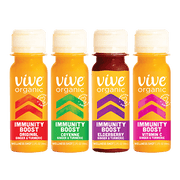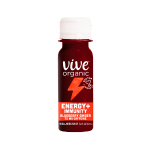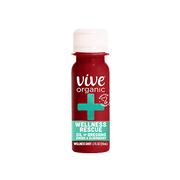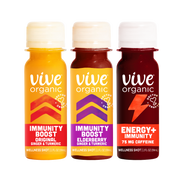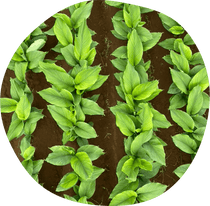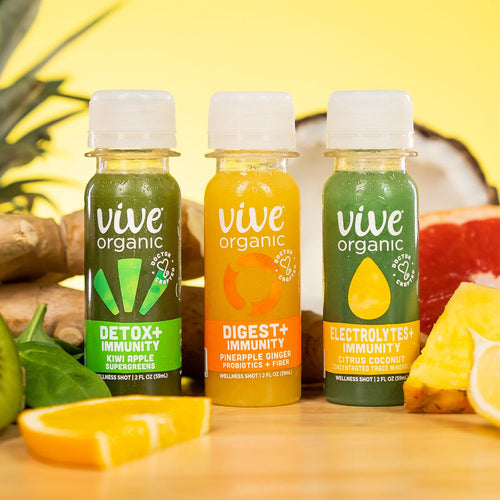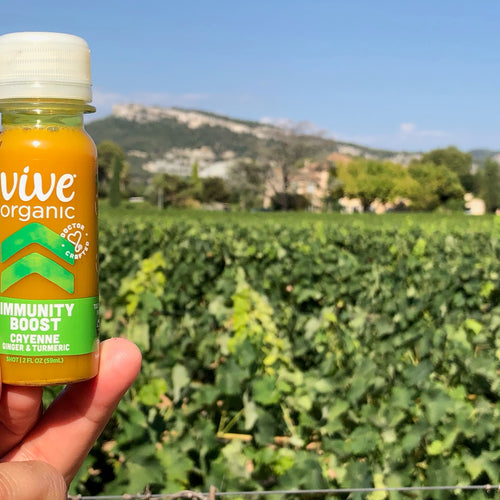The message to increase your intake of dietary fiber and adopt a fiber-rich diet appears to be louder and clearer than ever before. According to studies, consuming an adequate amount of dietary fiber is critical to maintaining your overall health.
In this blog, we will discuss the type of dietary fiber, and how to increase your intake through a variety of foods, including fiber-rich vegetables. We also uncover five potential health benefits associated with adequate dietary fiber consumption.
Defining Dietary Fiber
Dietary fiber is a type of complex carbohydrate required in all diets. Perhaps your parents told you that eating fruits and vegetables is beneficial because they add roughage or bulk to your diet. The term roughage or bulk simply refers to the indigestible portion of plant foods. When we say fiber is indigestible, it simply means that the digestive enzymes that normally break down foods are unable to break down the fiber, so it remains intact.
Essentially, eating enough plant foods, such as fruits, fiber-rich vegetables, whole grains, and legumes, is important because they contain vitamins, minerals, and phytonutrients and should be consumed as part of your daily basis.
Types of Dietary Fiber
There are two main types of dietary fiber that can be found in the majority of plant foods. Let’s take a look at defining both soluble and insoluble fiber along with some food sources of each.
Soluble Fiber
Soluble fiber is defined as dietary fiber that dissolves in water. It also forms a gel-like substance as it passes through the gastrointestinal (GI) tract.1 Soluble fiber is often credited for supporting the management of healthy blood glucose and healthy lipid metabolism.
Some sources of soluble fiber-rich foods include oats, oat bran, psyllium, barley and flax seeds, apples, berries, unripe bananas, oranges, and fiber-rich vegetables like beans, peas, legumes, carrots, broccoli, and brussels sprouts. 1, 2
Insoluble Fiber
Insoluble fiber is a dietary fiber that does not dissolve in water. It is, however, instrumental in helping to facilitate the movement of digested food and material to move through your GI tract by increasing the consistency of the stool, as well as stool frequency.1 Insoluble fiber is beneficial to ensure normal stools are passed, aiding those individuals who may have issues with infrequent or irregular stools.
Try adding foods that are good sources of insoluble fiber to your diet, like wheat bran, nuts, seeds, beans, and fiber-rich vegetables such as cauliflower, green beans, and potatoes to name a few.1, 2
Interestingly, some foods contain both types of fiber, so eating a variety of fiber-rich foods on a daily basis may help you not only meet your daily fiber requirements but ensure that you get enough soluble and insoluble fiber too.
How Much Fiber Do You Need?
Keep in mind that every person's nutritional needs are unique, and according to the Academy of Nutrition and Dietetics (AND), the recommended amount of dietary fiber is 14 grams for every 1,000 calories per day, but the exact amount may vary depending on your calorie or energy needs. In general, AND states that women should aim to meet the goal of approximately 25 grams of dietary fiber per day and men should look to meet approximately 38 grams of dietary fiber daily.2
Many of us may think we are ‘hitting the mark’, but our calculations may be off a bit. In the United States, adults consume an average of 15 grams of dietary fiber per day, which is nearly half of the recommended daily intake. 3
But don't worry; if you look at your plate and you aren’t seeing a lot of color from fruits, vegetables, or not many whole grain foods, consider adding one more serving of a fiber-rich food to each meal or take an extra helping of your favorite fiber-rich vegetables every day.
A simple rule of thumb is to gradually increase your intake of dietary while also increasing your consumption of water or other healthy beverages. This will help to support healthy bowel movement regularity.
5 Health Benefits of Dietary Fiber
- Supports a healthy gut microbiome: Increasing the amount of dietary fiber you consume each day you are helping to continuously support a healthy gut microbiome. Most prebiotic fiber is soluble fiber and good sources include whole grains such as oats and barley. Dried beans, fruits, and vegetables also contain prebiotic fiber, with some of the highest amounts found in fiber-rich vegetables like raw garlic, onions, leeks, and asparagus.4 Prebiotics help to positively influence the landscape of your gut microbiome by stimulating the beneficial probiotics in the gut to help them flourish.5
- Supports heart health: According to research, soluble fiber may aid in the maintenance of healthy lipid metabolism. This means that high-fiber foods may lower LDL, or "bad," cholesterol levels. High-fiber foods have also been shown to promote heart health and overall cardiovascular health. 1, 5
- Provides a sense of satiety: High-fiber foods help you feel fuller so that you may eat less and have a great sense of satiety or fullness. Choosing these high-fiber foods are usually those foods that are lower in calories, and higher in nutrients.
- Supports healthy glucose metabolism: Some studies suggest that soluble fiber may play a role in supporting healthy glucose levels, individual results can vary. 1, 5
- Supports healthy bowel function: Fiber also is linked to digestive benefits, such as increased stool bulk, and decreased time to move through the GI tract and removed from the body. 5
Take Aways
It's encouraging to see how a varied diet, particularly one high in fiber, benefits so many aspects of our overall health.
As always, we recommend that you have a conversation with your healthcare provider and a Registered Dietitian, who can assess your present intake and make suggestions if you have a gap in your dietary intake of fiber-containing foods.
Disclaimer: This blog contains promotional content about our products. The information provided in this blog is for educational and informational purposes only and should not be construed as medical advice. While the nutritional information and health tips shared here are based on published studies and expert insights, they should not replace advice and treatment from a healthcare professional. Always consult a qualified healthcare provider with any questions you may have regarding a medical condition or health objectives.
Resources
- Mayo Clinic. “Dietary Fiber: Essential for a Healthy Diet.” Mayo Clinic, 4 Nov. 2022, www.mayoclinic.org/healthy-lifestyle/nutrition-and-healthy-eating/in-depth/fiber/art-20043983. Accessed 18 Oct. 2024.
- Ellis, Esther. “Fiber.” Www.eatright.org, 3 Nov. 2020, www.eatright.org/health/essential-nutrients/. Accessed 18 Oct. 2024.
- Allarakha, Shaziya, MD. “What Are the Best Soluble Fiber Foods? Chart and Benefits.” MedicineNet, 10 Sept. 2021, https://www.medicinenet.com/what_are_the_best_soluble_fiber_foods/article.htm. Accessed 18 Oct. 2024.
- Corliss, Julie. “How a Fiber-rich Diet Promotes Heart Health.” Harvard Health, 1 Aug. 2022, www.health.harvard.edu/heart-health/how-a-fiber-rich-diet-promotes-heart-health#:~:text=Since%20then%2C%20findings%20from%20short-term%20clinical%20trials%20and,and%20what%20type%20of%20fiber%20makes%20a%20difference. Accessed 18 Oct. 2024.
- Quagliani, Diane, and Patricia Felt-Gunderson. “Closing America's Fiber Intake Gap: Communication Strategies From a Food and Fiber Summit.” American journal of lifestyle medicine vol. 11,1 80-85. 7 Jul. 2016, doi:10.1177/1559827615588079 https://www.ncbi.nlm.nih.gov/pmc/articles/PMC6124841/#abstract1
